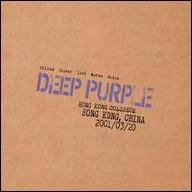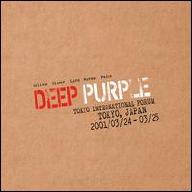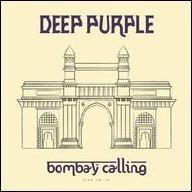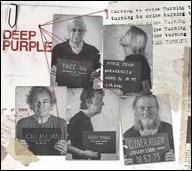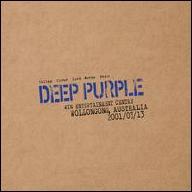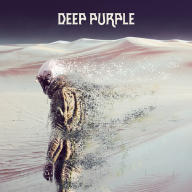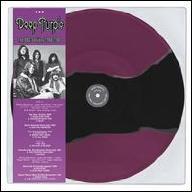Deep Purple were formed in Hertford, England in 1968 with an inaugural lineup that featured guitarist Blackmore, vocalist Rod Evans, bassist Nick Simper, keyboardist Jon Lord, and drummer Ian Paice. Initially dubbed Roundabout, the group was first assembled as a session band for ex-Searchers drummer Chris Curtis but quickly went their own way, touring Scandinavia before beginning work on their debut LP, Shades of Deep Purple. The most pop-oriented release of their career, the album generated a Top Five American hit with its reading of Joe South's "Hush" but otherwise went unnoticed at home. The Book of Taliesyn followed (in the U.S. only) in 1969, again cracking the U.S. Top 40 with a cover of Neil Diamond's "Kentucky Woman."
With their self-titled third LP, Deep Purple's ambitions grew; their songs reflected a new complexity and density as Lord's classically influenced keyboards assumed a much greater focus. Soon after the album's release, their American label Tetragrammaton folded, and with the dismissal of Evans and Simper, the band started fresh, recruiting singer Ian Gillan and bassist Roger Glover from the ranks of the pop group Episode Six.
The revamped Deep Purple's first album, 1970's Concerto for Group and Orchestra, further sought to fuse rock and classical music. When the project, which was recorded with the Royal Philharmonic Orchestra, was poorly received, Blackmore took creative control of the band, steering it toward a heavier, guitar-dominated approach that took full advantage of Gillan's powerful vocals. The gambit worked: 1970's Deep Purple in Rock heralded the beginning of the group's most creatively and commercially successful period. At home, the album sold over a million copies, with the subsequent non-LP single "Black Night" falling just shy of topping the U.K. pop charts. Released in 1971, Fireball was also a smash, scoring a hit with "Strange Kind of Woman."
Plans to record the follow-up at the Casino in Montreux, Switzerland, were derailed after the venue burned down during a live appearance by Frank Zappa, but the experience inspired Deep Purple's most enduring hit, the AOR staple "Smoke on the Water." The song, featured on the multi-platinum classic Machine Head, reached the U.S. Top Five in mid-1972 and positioned Deep Purple among rock's elite; the band consolidated its status with the 1973 studio follow-up Who Do We Think We Are and the hit "Woman from Tokyo." However, long-simmering creative differences between Blackmore and Gillan pushed the latter out of the group that same year, with Glover soon exiting as well. Singer David Coverdale and bassist/singer Glenn Hughes were recruited for 1974's Burn, and Gillan formed a band bearing his own name.
After completing 1974's Stormbringer, Blackmore left Deep Purple to form Rainbow with vocalist Ronnie James Dio; his replacement was ex-James Gang guitarist Tommy Bolin, who made his debut on Come Taste the Band. All the changes clearly took their toll, however, and following a farewell tour, the group dissolved in 1976. Coverdale, meanwhile, went on to form Whitesnake, and Bolin died of a drug overdose later in the year.
The classic lineup of Blackmore, Gillan, Lord, Glover, and Paice reunited Deep Purple in 1984 for a new album, the platinum smash Perfect Strangers. The House of Blue Light followed three years later, but as past tensions resurfaced, Gillan again exited in mid-1989. Onetime Rainbow vocalist Joe Lynn Turner was recruited for 1990's Slaves and Masters before Gillan again rejoined to record The Battle Rages On..., an apt title as Blackmore quit the group midway through the supporting tour, temporarily replaced by Joe Satriani.
In 1994, Steve Morse took over the guitar slot (fresh from a stint in Kansas), and the revitalized group returned to the studio for 1996's Purpendicular, which proved a success among the Purple faithful. Abandon followed in 1998, along with a 1999 orchestral performance released the following year as Live at the Royal Albert Hall. Deep Purple were given the box set treatment the same year with the four-disc set Shades: 1968-1998, which collected hits, demos, live takes, and unreleased tracks from throughout the years (touching upon all of Purple's different lineups). Meanwhile, Blackmore kept himself busy after leaving the band by issuing a single album with his briefly resuscitated outfit Rainbow (1998's Stranger in Us All), before forming the Renaissance-inspired Blackmore's Night with fiancée/vocalist Candice Night.
Despite continuing lineup upheavals, Deep Purple remained active well into the 21st century. Keyboardist Lord departed the band in 2002 and issued several classical albums during the remainder of the decade; sadly, he died in 2012 after battling pancreatic cancer for nearly a year. Lord's replacement in Deep Purple during the new millennium was Don Airey, and the band issued two surprisingly strong albums with the lineup of Gillan, Glover, Paice, Morse, and Airey: 2003's Bananas and 2005's Rapture of the Deep. The late '90s and early 2000s also saw the release of many archival releases and collections preserving the band's enduring legacy (Machine Head's 25th anniversary, Friends Relatives, Rhino's The Very Best Of, and Days May Come and Days May Go: The 1975 California Rehearsals), as well as a slew of DVDs (Total Abandon: Live Australia 1999, In Concert with the London Symphony Orchestra, Bombay Calling, and New Live Rare). The impressive and timeless-sounding Now What?!, produced by Bob Ezrin, appeared early in 2013.
Surviving members of Deep Purple reunited for a tribute concert on April 4, 2014 at Royal Albert Hall; it marked the 45th anniversary of the debut of Jon Lord's "Concerto for Group and Orchestra." The event was chronicled on film and on two albums, Celebrating Jon Lord: The Rock Legend and Celebrating Jon Lord: The Composer, which appeared in the fall of 2014. The group returned to the same Nashville studio with Ezrin early in 2016. A pre-release single of the opening track, "Time for Bedlam," was issued in December. In January, Infinite's title, cover, and track listing were announced. In an interview, Airey described the album as "a little heavier than the last one...a bit more prog." Infinite was released in April 2017 as a precursor to Deep Purple's global "Long Goodbye Tour." Later that year, Rhino issued Fire in the Sky, a 40-track career retrospective that included at least one track from every studio album through 2013's Now What?! The Infinite tour was documented with the 2018 live release The Infinite Live Recordings, Vol. 1. After the tour, Ezrin invited the band back to Nashville to write and record. Using the motivational motto "Deep Purple is putting the 'Deep' back into 'Purple'," they stretched out in several musical directions. The completed outing, titled Whoosh!, was released in July 2020. ~ Jason Ankeny & Greg Prato, Rovi



